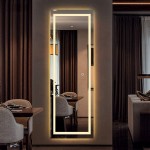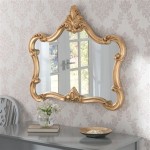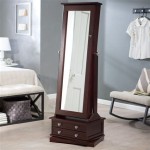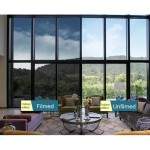Concave Mirrors: Making Objects Appear Smaller or Bigger
Concave mirrors, also known as converging mirrors, play a crucial role in various optical applications. They possess a curved reflecting surface that curves inward, like a spoon bowl. This curvature is responsible for their unique ability to manipulate light and create different images depending on the object's position relative to the mirror. Understanding how concave mirrors affect the size of objects is essential for comprehending their functionality and impact in fields such as optics, astronomy, and medical imaging.
How Concave Mirrors Work
The way concave mirrors influence the size of objects is determined by the laws of reflection. When light rays strike the mirror's surface, they bounce back in accordance with the angle of incidence. Due to the inward curvature, light rays converging towards the mirror are reflected to a single point known as the focal point (F). The distance between the mirror's surface and the focal point is called the focal length (f). The position of the object in relation to the focal length dictates the size of the image formed by the mirror.
Magnification and Diminution
Concave mirrors can produce both magnified and diminished images, depending on the object's location. When an object is placed beyond the focal point (F), the mirror forms a real, inverted, and diminished image. Real images can be projected onto a screen, while inverted images appear upside down. This principle is employed in telescopes, where distant objects are magnified to be observed in greater detail.
However, when an object is situated between the focal point (F) and the mirror's surface, a virtual, upright, and magnified image is formed. Virtual images cannot be projected onto a screen because the light rays do not actually converge at a point. This property is utilized in magnifying glasses, where a small object placed within the focal length appears larger than its actual size.
Key Applications of Concave Mirrors
Concave mirrors are used in a wide array of applications, leveraging their ability to magnify or diminish objects. Some notable applications include:
- Telescopes: Concave primary mirrors in reflecting telescopes gather and focus light from distant objects, enabling astronomers to study celestial bodies in greater detail.
- Headlights and Searchlights: The concave reflecting surface of headlights and searchlights directs light beams into a concentrated and focused direction. This allows for a more powerful and directed light source.
- Magnifying Mirrors: These mirrors, commonly found in bathrooms, utilize the magnifying property of concave mirrors to provide a closer view of the face, allowing for more precise makeup application or grooming.
- Solar Cookers: Concave mirrors are employed in solar cookers to concentrate sunlight onto a focal point, generating heat for cooking purposes.
- Dental Mirrors: Dentists use concave mirrors to visualize hard-to-reach areas of the mouth, allowing for a clearer view of teeth and gums.
In conclusion, concave mirrors exhibit a remarkable ability to manipulate light, resulting in either magnified or diminished images depending on the object's position in relation to the focal point. Their diverse applications in various scientific and technological fields highlight their importance in our modern world.
Objects In The Mirror Are Actually Images Article Khan Academy

Question Comparing The Sizes Of Images Produced By A Concave Mirror Nagwa
Objects In The Mirror Are Actually Images Article Khan Academy
Objects In The Mirror Are Actually Images Article Khan Academy

Convex Mirror Uses Of Definition Equation
Objects In The Mirror Are Actually Images Article Khan Academy

Why Do I Look Diffe In Mirrors 5 Common Reasons

Concave Mirror
Under Which Condition A Concave Mirror Can Form An Image Larger Than The Actual Object Quora

4 7 Image Formation By Mirrors Douglas College Physics 1207








